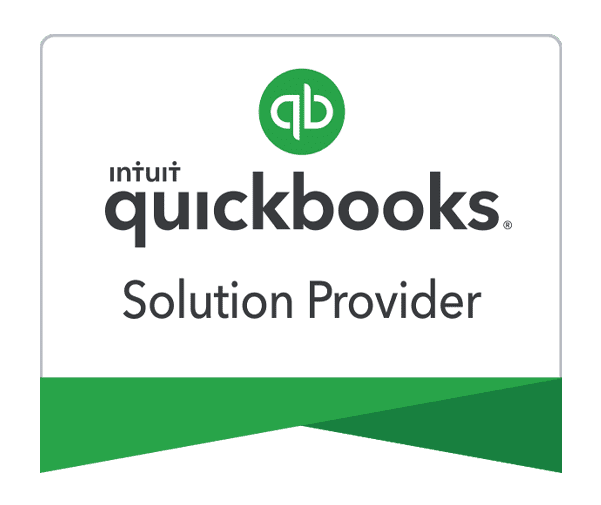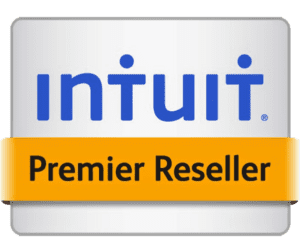Avoiding Chargebacks: Best Practices for QuickBooks Credit Card Processing

Paygration, Inc.
Chargebacks can be a significant headache for merchants. They occur when a customer disputes a charge on their credit card statement, leading to a reversal of funds. For merchants using QuickBooks credit card processing, chargebacks can disrupt cash flow, damage reputation, and incur additional fees. Understanding what chargebacks are and how to avoid them is crucial for businesses looking to maintain a smooth payment process.
In this article, we’ll delve into the ins and outs of chargebacks in QuickBooks and outline the top best practices to avoid them.
Understanding Chargebacks in QuickBooks
Chargebacks in QuickBooks occur when a customer disputes a transaction made with their credit card. This can happen for various reasons, including unauthorized transactions, billing errors, or dissatisfaction with the product or service. When a chargeback is initiated, the funds are forcibly withdrawn from the merchant’s account and returned to the customer, along with any associated fees.
Explore the top 10 advantages of accepting credit cards within QuickBooks.
Best Practices for QuickBooks Credit Card Processing
Clear and Descriptive Billing Statements
Clear and descriptive billing statements are essential for minimizing confusion and reducing the likelihood of chargebacks. When customers review their credit card statements, they should be able to easily recognize and understand the transactions associated with your business. Ambiguous or unfamiliar descriptors can lead to misunderstandings and prompt customers to initiate chargebacks out of concern for fraudulent activity.
By ensuring that billing statements accurately reflect your business name, product, or service, you provide transparency and reassurance to customers. For example, if your business name is “XYZ Enterprises,” make sure it appears as such on billing statements rather than an obscure abbreviation or unfamiliar name.
Additionally, including relevant details such as order numbers or invoice references can help customers identify transactions more easily. This is especially important for businesses that offer multiple products or services, as it prevents confusion regarding the specific transaction in question.
Furthermore, if your business operates under different brand names or subsidiaries, ensure that each entity’s billing descriptor is distinct and recognizable. This prevents customers from mistakenly disputing charges due to unrecognized billing descriptors..
Transparent Refund Policy
A transparent refund policy is a crucial component of customer satisfaction and can significantly reduce the occurrence of chargebacks. By clearly communicating your refund policy to customers upfront, you set clear expectations and provide reassurance in the event of dissatisfaction or unforeseen circumstances.
Your refund policy should be easily accessible on your website, visible during the checkout process, and included in confirmation emails or receipts. Clearly outline the conditions under which refunds are provided, including time frames, eligibility criteria, and any associated fees.
Additionally, strive to make your refund process as straightforward and hassle-free as possible. Ensure that customers know how to initiate a refund request and provide multiple channels for communication, such as email, phone, or live chat.
When customers are confident in your refund policy and understand their options for recourse, they are less likely to resort to chargebacks as a means of resolving disputes. Instead, they will be more inclined to follow the established refund process, leading to smoother transactions and better customer relationships.
Prompt Order Fulfillment and Delivery
Prompt order fulfillment and delivery are essential for minimizing chargebacks, especially in e-commerce transactions. Customers expect their orders to be processed and delivered in a timely manner, and delays can lead to frustration and ultimately, chargebacks.
To avoid chargebacks related to delayed or undelivered orders, prioritize efficient order processing and shipping procedures. Provide accurate estimates of delivery times and communicate any delays or issues to customers promptly.
Utilize tracking services for shipments whenever possible, allowing customers to monitor the progress of their orders. Providing tracking information not only enhances transparency but also reassures customers that their orders are on their way.
Moreover, consider offering expedited shipping options for customers who require faster delivery. While this may entail additional costs, the convenience and peace of mind it provides can help prevent chargebacks and foster positive customer experiences.
Secure Payment Processing
Secure payment processing is paramount in protecting both your business and your customers from fraudulent activity and chargebacks. Utilizing reliable payment gateways, such as those integrated with QuickBooks, ensures that sensitive payment information is encrypted and securely transmitted during transactions.
QuickBooks offers robust security features, including encryption and tokenization, which safeguard customer data and prevent unauthorized access. By processing payments through QuickBooks, you provide customers with peace of mind knowing that their financial information is protected.
Additionally, ensure that your website and payment pages are secure and PCI-compliant. Secure sockets layer (SSL) certificates encrypt data transmitted between your website and the customer’s browser, preventing interception by malicious actors.
Furthermore, implement additional security measures such as two-factor authentication and fraud detection systems to identify and prevent suspicious transactions. By proactively monitoring for fraudulent activity, you can mitigate the risk of chargebacks and protect your business’s finances.
Verification of Cardholder Information
Verifying cardholder information is a crucial step in preventing fraudulent transactions and reducing the likelihood of chargebacks. Address Verification Service (AVS) and Card Verification Value (CVV) are commonly used methods to verify the identity of cardholders and ensure that transactions are legitimate.
AVS checks the billing address provided by the customer against the address on file with the credit card issuer, while CVV verifies the three or four-digit code printed on the back of the credit card. By requiring customers to provide this information during checkout, you add an extra layer of security to the transaction.
Furthermore, consider implementing additional verification measures for high-risk transactions, such as requiring a copy of the customer’s ID or contacting them directly to confirm the purchase. While these additional steps may add some friction to the checkout process, they can significantly reduce the risk of fraudulent activity and chargebacks.
Detailed Product Descriptions
Detailed and accurate product descriptions play a crucial role in setting clear expectations for customers and minimizing the risk of chargebacks. When customers have a clear understanding of what they are purchasing, they are less likely to dispute the transaction based on misunderstandings or discrepancies.
Provide comprehensive product descriptions that include relevant details such as size, color, dimensions, materials, and any applicable specifications or features. Use high-quality images or videos to showcase the product from different angles and provide a realistic representation of its appearance.
Additionally, include any relevant terms and conditions, such as warranty information, return policies, or disclaimers, to ensure transparency and avoid misunderstandings.
Furthermore, be honest and transparent about the product’s availability, condition, and expected delivery times. If a product is backordered or has limited stock, clearly communicate this information to customers upfront to manage their expectations.
Excellent Customer Service
Excellent customer service is a powerful tool in preventing chargebacks and resolving disputes amicably. By providing prompt and attentive support to customers, you can address concerns or issues before they escalate into chargebacks.
Make it easy for customers to reach out to you with questions or problems by providing multiple channels for communication, such as email, phone, live chat, or social media. Respond to inquiries promptly and courteously, demonstrating your commitment to customer satisfaction.
When a customer expresses dissatisfaction or requests a refund, listen attentively and strive to find a satisfactory resolution. This may involve offering a refund, replacement, or alternative solution depending on the circumstances. By being proactive in resolving customer issues, you can prevent chargebacks and preserve customer loyalty.
Additionally, provide clear and accurate information to customers throughout the purchasing process, from product details to shipping updates. Transparency and communication are key in building trust and reducing misunderstandings that may lead to chargebacks.
Regular Reconciliation and Monitoring
Regular reconciliation and monitoring of transactions are essential for identifying discrepancies or potential issues that may lead to chargebacks. By staying proactive and vigilant, you can address problems early and prevent them from escalating.
Reconcile accounts regularly to ensure that transactions match up with expected sales and revenue. This involves comparing records from your payment processor with your accounting system to identify any discrepancies or discrepancies.
Additionally, monitor transaction patterns and look for any unusual or suspicious activity that may indicate fraudulent behavior. Set up alerts or notifications for specific transaction types or amounts to flag potential issues for further investigation.
Moreover, analyze chargeback data to identify recurring reasons or trends behind disputes. By understanding why chargebacks occur, you can take corrective actions to address underlying issues and prevent future occurrences.
Stay Informed About Chargeback Reason Codes
Chargeback reason codes provide valuable insights into why chargebacks occur and what actions can be taken to prevent them. By understanding the most common reason codes associated with chargebacks, you can identify areas for improvement and implement targeted strategies to reduce their occurrence.
Common chargeback reason codes include unauthorized transaction, fraudulent transaction, merchandise not received, merchandise not as described, and billing errors. Each reason code indicates a specific issue or concern raised by the cardholder, such as unauthorized use of their card, dissatisfaction with the product or service, or discrepancies in billing.
Stay informed about chargeback reason codes by regularly reviewing reports provided by your payment processor or card network. Analyze the root causes behind chargebacks and take appropriate actions to address them, whether it’s improving communication with customers, optimizing order fulfillment processes, or enhancing fraud prevention measures.
Additionally, educate your staff about chargeback reason codes and the importance of preventing them. By raising awareness and fostering a culture of accountability, you can empower your team to play an active role in reducing chargebacks and protecting your business.
Documentation and Record-Keeping
Comprehensive documentation and record-keeping are essential for disputing chargebacks and providing evidence of valid transactions. By maintaining detailed records of transactions, communications with customers, and relevant documentation, you can strengthen your case in the event of a chargeback dispute.
Keep copies of order confirmations, invoices, receipts, shipping manifests, and any other documentation related to transactions. This documentation should include detailed information such as product descriptions, quantities, prices, and customer details.
Additionally, document any communication with customers, including emails, phone calls, or live chats, regarding the transaction in question. Note down any promises made, agreements reached, or issues resolved during these interactions.
Furthermore, keep records of any actions taken to prevent chargebacks, such as implementing fraud prevention measures or addressing customer concerns. This demonstrates your commitment to maintaining a secure and reliable payment process.
Discover the 15 best practices for credit card processing in QuickBooks.
Conclusion
Following these best practices can significantly reduce the likelihood of chargebacks and mitigate their impact on your business. By prioritizing clear communication, transparency, security, and customer satisfaction, you can build trust, minimize disputes, and maintain a healthy payment process.
Remember, chargebacks can have serious consequences for businesses, including financial losses, damaged reputation, and increased processing fees. By implementing these best practices and staying proactive in managing your QuickBooks credit card processing, you can protect your business and ensure smooth transactions for your customers.
To explore robust payment gateway solutions and receive expert guidance on avoiding chargebacks, businesses can contact Paygration for a free demo and consultation at 866-949-7267. Paygration specializes in providing secure and efficient payment processing solutions, helping businesses streamline their payment processes and mitigate risks associated with chargebacks. Don’t let chargebacks disrupt your business operations – take proactive steps to safeguard your transactions today.
















